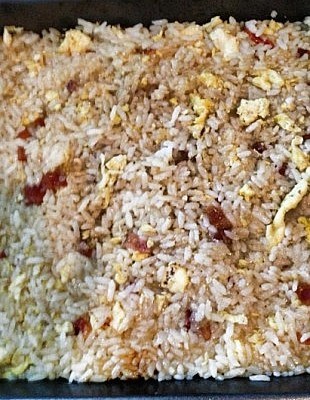Nutrition is often referred to as the fourth discipline in triathlon. As my husband prepared for his first Ironman 140.6 in 2011, I put myself in charge of nutrition and we experimented with different drinks, chews, gels, and salt tabs along with perfecting his daily nutritional needs. The main rule we learned was to listen to his body- something I should have kept in mind myself as I trained for my first 70.3 (swim 1.2 miles, bike 56 miles, run 13.1 miles) the following summer.
Instead, I bought into everything that was being marketed to me and I could not figure out why my body was not performing well during my shorter races. On the day of my 70.3, instead of eating what I normally ate while on a long bike, I had a bad case of race brain- and decided to get ahead on my gel intake, downing one after the other. I remember eating the last gel as I high-fived my kids on my way out of transition- then starting at mile 5 of my run, my body went into full-on revolt. The last 8 miles of my race became a true test of will, and I refused to quit, putting one foot in front of the other and trying to figure out what I had done- nutritionally- to be hurting so badly.
I made two crucial mistakes that day- the first being that I did not practice my race day nutrition and stick to my practiced plan; and the second being that I failed to follow my own simple nutrition rule- you are what you eat. I had a few months to figure it out, fix my nutrition, and break my pre-packaged habit.
Enter the guys from Skratch Labs. Biju Thomas and Allen Lim have a very simple approach which is explained in their first book, The Feed Zone Cookbook: “Regardless of diet, preference, or theme, what separates a good diet from a great diet are the ingredients one starts with. Begin with fresh, whole foods that come in their own wrapper with as many of their parts intact as possible.” They go on to say, “Regardless of your athletic talent or aspirations, the meals that fuel you are best when made, as much as possible, from scratch and with real intent and care.” This all sounds amazing, but the first issue any amateur athlete has is time. To prepare all of your nutrition- from your basic daily meals to all of your training fuel- takes time. But this idea of taking whole food on the bike or on the run was intriguing to me, and even though I’m still working on the semantics of what will work in my pocket on the run or in the bento box on the bike, taste testing the recipes with friends has led me to believe these guys might have the right idea. And I’m not alone- they recently provided nutrition for part of the professional cyclists during the Amgen Tour of California. The main thing they stress in their books- besides cooking whole foods from scratch and avoiding processed foods and artificial anything- is that each athlete is different, and you have to find what works for you.
Rice is a staple ingredient in a lot of their cakes and bars, as it provides a consistent energy source that does not upset the stomach. Try Allen’s Rice Cakes (from The Feed Zone Cookbook) for a sweet and savory portable snack- easy to take on the bike in the back of your jersey, or as a pre-run meal.
Allen’s Rice Cakes, makes 10 servings
225 calories per serving; 8g fat; 321mg Sodium; 30g Carbs; 1g Fiber; 9g protein
Ingredients:
- 2 C uncooked Calrose or other medium-grain sticky rice
- 3 C water
- 8 ounces bacon
- 4 eggs
- 2 tablespoons liquid amino acids or low-sodium soy sauce
- Brown sugar
- Salt and grated parmesan (optional)
Instructions:
- Combine rice and water in a rice cooker.
- While rice is cooking, chop up bacon before frying, then fry in a medium sauté pan. When crispy, drain off fat and soak up excess fat with paper towels.
- Beat the eggs in a small bowl and then scramble on high heat in the sauté pan. Don’t worry about overcooking the eggs as they’ll break up easily when mixed with the rice.
- In a large bowl or in the rice cooker bowl, combine the cooked rice, bacon, and scrambled eggs. Add the liquid amino acids or soy sauce and sugar to taste.
- After mixing, press into an 8- or 9-inch square baking pan to about 1 ½ inch thickness. Top with more brown sugar, salt to taste, and grated parmesan, if desired.
- Cut and wrap individual cakes and store in refrigerator or freezer.
Check out both cookbooks from the guys at Skratch Labs: The Feed Zone Cookbook and Feed Zone Portables, by Biju Thomas and Allen Lim.
By: Anne Reed, amateur triathlete and wife of an Ironman triathlete.
More from Fit Nation:
Dine Smart: Seasons 52
Seven Mindful Steps to Achievement
Foodily: Sharing Recipes Made Simple

